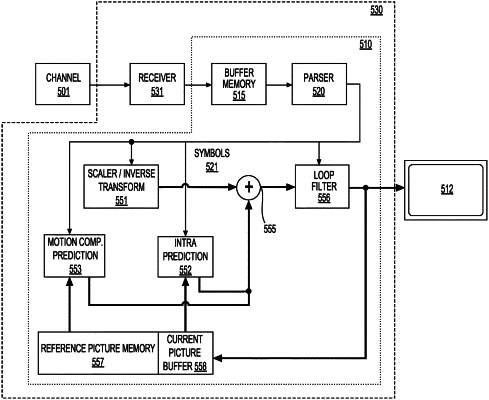| CPC H04N 19/70 (2014.11) [H04N 19/12 (2014.11); H04N 19/174 (2014.11); H04N 19/60 (2014.11)] | 18 Claims |

|
1. A method of video decoding, comprising:
obtaining a video bitstream;
determining that the video bitstream includes a first syntax element corresponding to a general constraint information (GCI) syntax structure, the first syntax element indicating a number of additional bits in the GCI syntax structure;
in accordance with the determination that the first syntax element has a first value:
decoding the GCI syntax structure and obtaining a second syntax element for coding control in a first scope of coded video data in a bitstream, the second syntax element being associated with a coding tool of a slice based Rice coding for a residual coding in a transform skip mode, the second syntax element indicating whether to disable the coding tool in each coded layer video sequence (CLVS) in the first scope of the coded video data, wherein the coding tool provides a Rice parameter at a slice level for the residual coding in the transform skip mode; and
in response to the second syntax element being a second value indicative of disabling of the coding tool in the first scope, decoding the first scope of the coded video data that includes one or more CLVSs of the coded video data without invoking the coding tool.
|